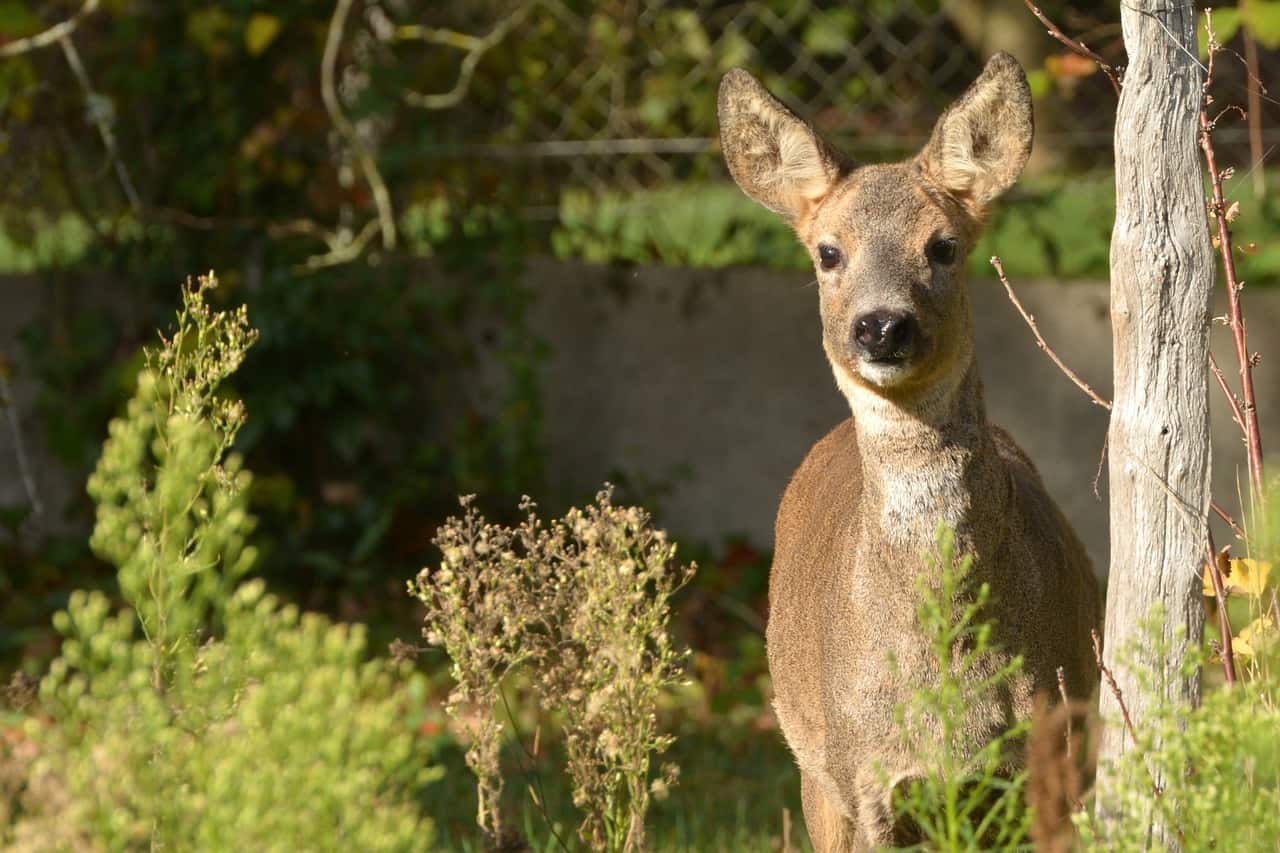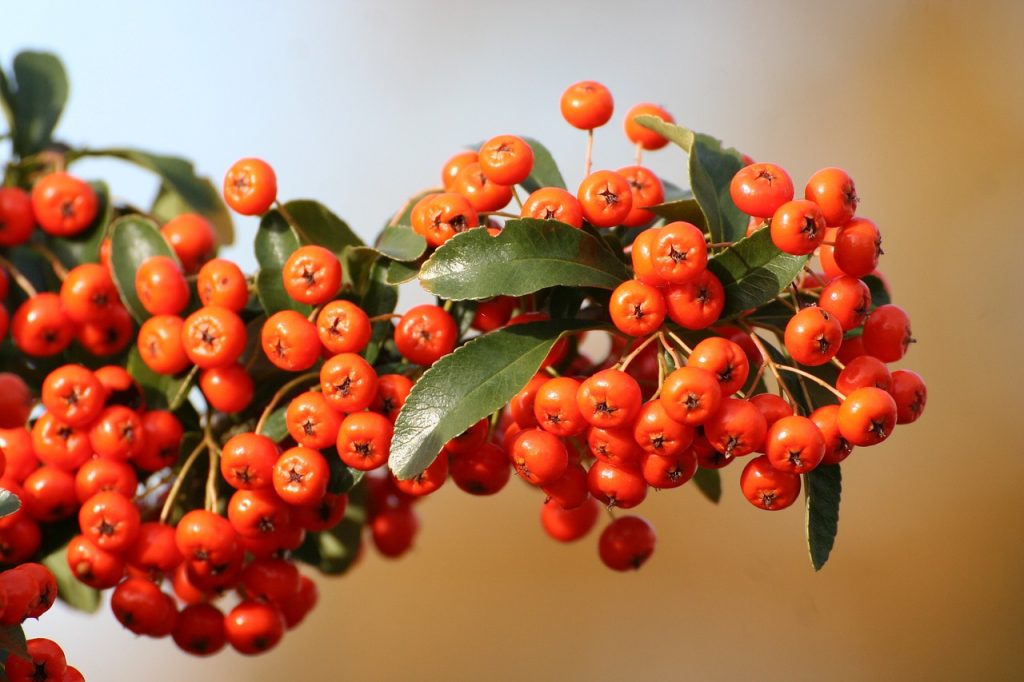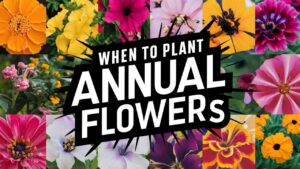One significant concern for many is choosing plants that can withstand not only the changing seasons but also the local wildlife, particularly deer. These graceful creatures can wreak havoc on a garden, munching on beloved blooms and foliage. Here, we explore three excellent fall plants known for their deer-resistant properties:
Bee Balm
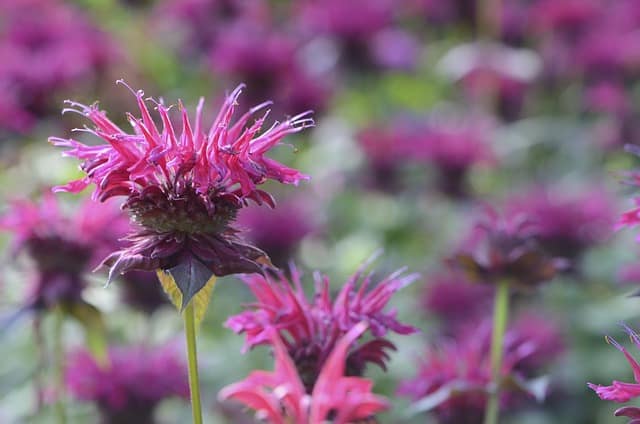
Bee Balm (Monarda didyma), also known as Oswego tea, is a perennial plant that thrives in a variety of conditions, making it a superb addition to any fall garden. Native to North America, this vibrant plant showcases stunning, tubular flowers in shades of pink, red, and purple. One of the key reasons deer tend to avoid Bee Balm is its strong aromatic scent, which is often off-putting to these herbivorous foragers.
Not only does Bee Balm deter deer, but it also attracts a plethora of beneficial pollinators, such as bees and butterflies. This is particularly important in the fall when other floral resources are dwindling. The plant can thrive in various soil types, preferring moist, well-drained conditions, and can tolerate partial shade, though it flourishes best in full sunlight.
Aside from its aesthetics and wildlife-friendly properties, Bee Balm also offers culinary benefits; its leaves can be used to create a fragrant tea with a hint of minty taste. Moreover, Bee Balm plays a role in traditional herbal medicine for various ailments, which underlines its value in a garden that aims to be both functional and beautiful.
California Poppy
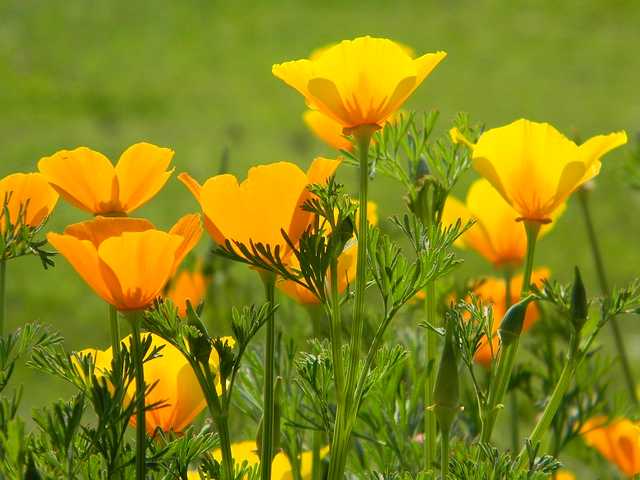
The California Poppy (Eschscholzia californica) is a brilliant burst of sunshine in any garden. This iconic flower is not only the state flower of California, but it also embodies the resilience needed for autumn gardening. Featuring vivid orange and yellow blooms that open in the sun and close at night, California Poppy’s unique characteristics and low-maintenance needs contribute to its deer-resistant reputation.
What makes California Poppy particularly appealing is its drought-tolerant nature, requiring little water once established, making it a perfect choice for eco-conscious gardeners. Additionally, the plant contains latex, which is unpalatable to deer, persuading them to steer clear. Furthermore, the California Poppy attracts butterflies and beneficial insects, enhancing biodiversity in your garden and contributing to the overall health of your planting.
Planting California Poppy in clusters creates a stunning visual impact while forming a carpet of color that can last well into the fall. These annuals are easy to grow from seed, thriving in well-drained, sandy soils under full sun, making them an excellent choice for xeroscaping or low-water gardens. Their ability to self-seed means that with little effort, they can return year after year, bringing consistent joy without needing extensive maintenance.
Blue Wild Indigo
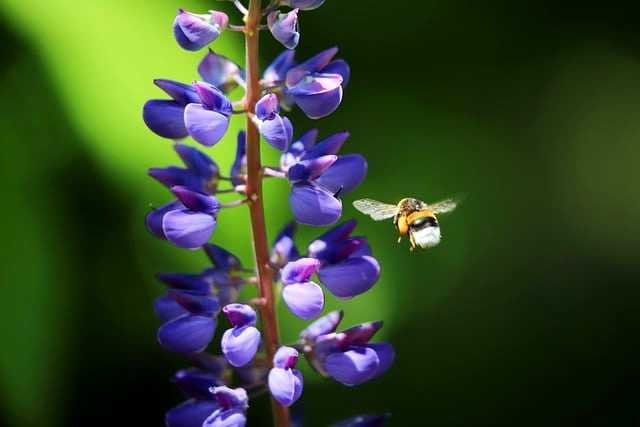
Blue Wild Indigo (Baptisia australis) is a native perennial that many gardeners overlook, yet it is an exceptional choice for those looking to cultivate a deer-resistant fall garden. This plant features tall spikes of blue flowers that bloom in early summer, reminiscent of flowering peas. Its foliage is equally impressive, with lush, trifoliate leaves that provide a striking visual interest, even as the blooms fade.
One of the most remarkable attributes of Blue Wild Indigo is its resilience; it thrives in a range of soil types, including poor, dry soils, which are often unattractive to deer searching for lush vegetation. The plant’s toxic alkaloids are also a deterrent, making it less appealing to hungry browsing animals. Additionally, its long taproot allows it to anchor firmly in the ground, enabling it to survive periods of drought—an excellent quality for gardeners in regions where water scarcity is a concern.
Beyond its practical benefits, Blue Wild Indigo is vital for pollinators, attracting multiple species of bees and butterflies during its blooming season. As the seasons transition into fall, the plant’s seed pods develop, contributing to the garden’s visual and ecological variety. Moreover, these seed pods can be left in place over winter, offering interest even in the colder months and providing food for wildlife.
Yarrow
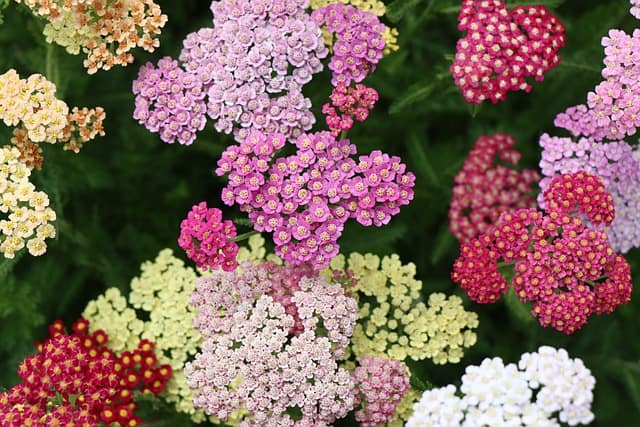
Yarrow (Achillea millefolium) is a perennial herb that deserves a prominent spot in any fall garden. Known for its feathery foliage and clusters of small, daisy-like flowers, Yarrow comes in a variety of colors, including white, yellow, and pink. What truly sets Yarrow apart is its exceptional adaptability and deer resistance. The plant features a strong, aromatic scent and bitter chemical composition, which many mammals find unpalatable.
Yarrow thrives in well-drained soil and can tolerate drought conditions, making it an excellent choice for those aiming for a low-maintenance garden. Its deep root system allows it to access moisture during dry spells while surviving in nutrient-poor soils where other plants might struggle. Furthermore, Yarrow’s flowers, which bloom from late spring into early summer, attract various pollinators, including bees and butterflies, enhancing the biodiversity of your garden.
In addition to its ornamental traits, Yarrow has been used in traditional herbal medicine for centuries. Its leaves and flowers are known for their healing properties, commonly utilized to treat wounds and promote healing. Thus, not only does Yarrow add beauty and resilience to your landscape, but it also serves as a functional herb that connects you to the historical uses of plants.
Cardinal Flower
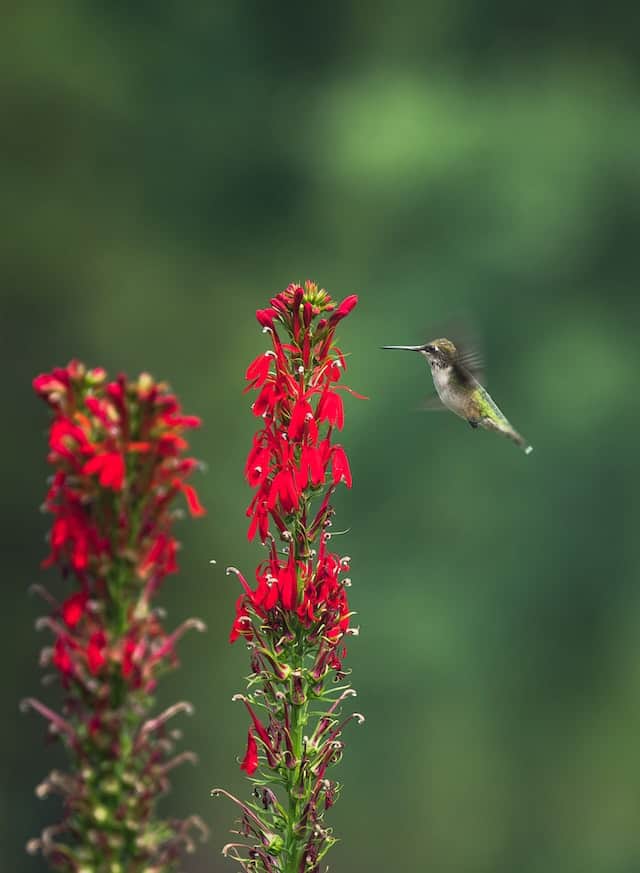
The Cardinal Flower (Lobelia cardinalis) is a striking addition to any fall garden, renowned for its vivid red flowers that attract not only gardeners’ attention but also hummingbirds and butterflies. This perennial plant flourishes in moist, rich soils, typically found near streams and wetlands, making it an excellent choice for gardeners looking to enhance their low-lying or hydric areas.
Deer tend to avoid Cardinal Flower due to its glossy leaves and high water content, which can be too much for their systems to handle. This characteristic makes it a desirable option for those wishing to create a visually captivating landscape that is also safe from browsing animals. The bright blooms usually appear in late summer and can persist into fall, providing a splash of color when many other plants are fading.
From an ecological perspective, the Cardinal Flower plays a vital role in the ecosystem by attracting crucial pollinators. However, it is also essential to maintain a balance, as this plant can spread rapidly in favorable conditions, potentially taking over spaces if not properly managed. Incorporating Cardinal Flower in a mixed border or as part of a rain garden encourages a sustainable approach, enhancing both its beauty and ecological contributions while keeping deer at bay.
Trillium

Trillium, often referred to as wood lily, represents a collection of spring-blooming perennials that provide elegance and charm in shaded areas of your garden. This native flower is distinguished by its three-petaled blooms in white, pink, and purple colors, often found in rich woodland ecosystems. Although commonly recognized as an early spring bloomer, certain species of Trillium open their flowers in late summer or early fall, fitting beautifully into our deer-resistant falls plants theme.
One of the notable aspects of Trillium is its resilience against deer, largely attributed to its toxic alkaloids, which make it unappealing for deer and other herbivorous animals. Additionally, Trillium thrives in moist, rich, and well-drained soils, often associating with deciduous trees that can provide dappled sunlight—a perfect setting for its growth.
Interestingly, Trillium is a symbol of longevity and purity in many cultures, and its presence is considered a sign of a healthy forest ecosystem. Organic gardeners often appreciate its role in maintaining soil health too, as Trillium can enhance nutrient cycling in woodland gardens. Incorporating this flower into your landscape adds grace and character while upholding ecological balance.
Bleeding Heart
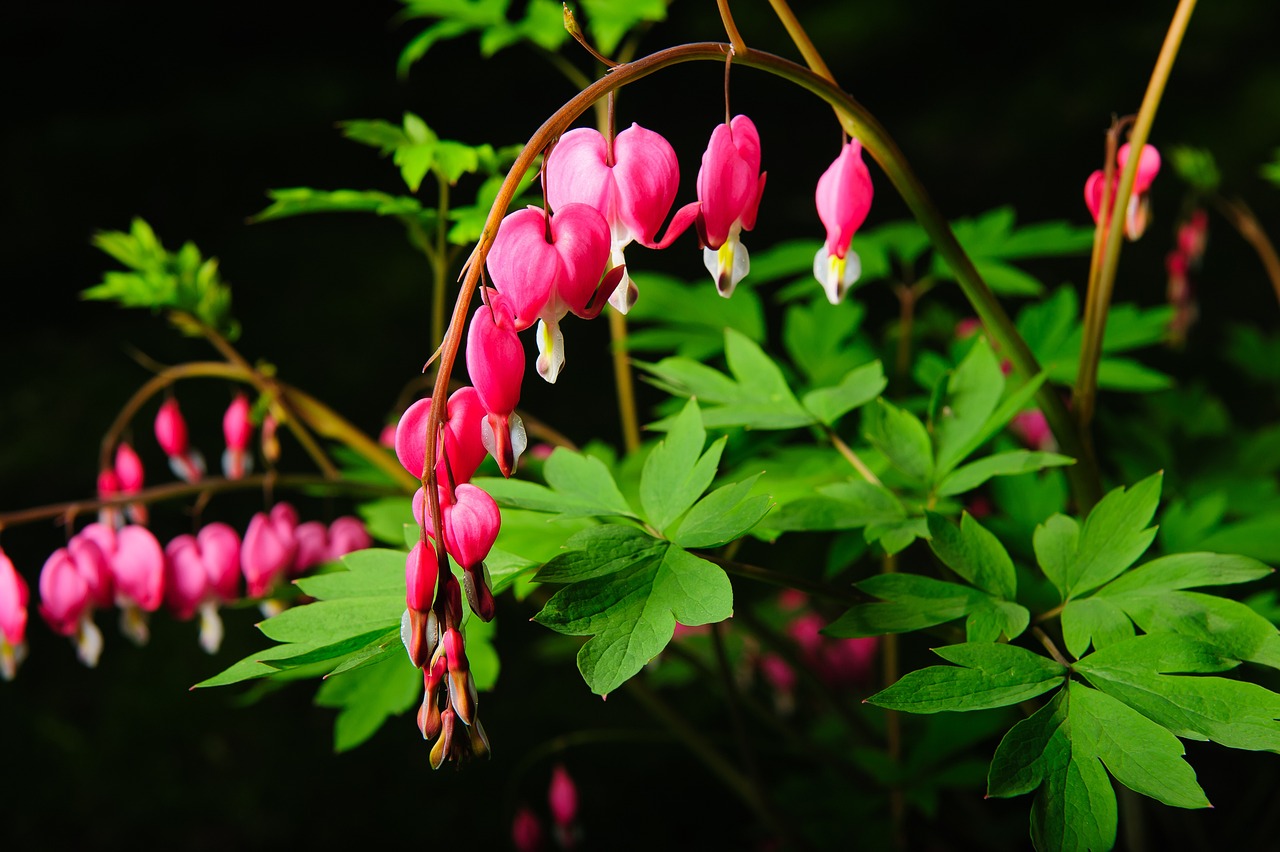
Bleeding Heart (Dicentra spectabilis) is one of the most enchanting perennials available, known for its distinctive heart-shaped flowers that dangle delicately from arching stems. This plant typically showcases soft pink or white blooms in the spring, creating an enchanting focal point that can persist into early fall in favorable conditions, especially with proper care.
One of the reasons Bleeding Heart is often overlooked in discussions of deer-resistant plants is its unusual appearance, making it less appealing to deer, who tend to favor more conventional florals. Beyond its aesthetic appeal, the plant thrives under the canopy of shade, making it an excellent choice for gardens with limited sunlight. It prefers moist, well-drained soil rich in organic matter, enabling it to establish a robust root system while also contributing to soil health.
Additionally, Bleeding Heart provides ecological benefits by attracting beneficial pollinators like bees and butterflies during its bloom period. Its unique flowering structure encourages exploration by these pollinators, helping to enhance the surrounding biodiversity. Incorporating Bleeding Heart into your fall garden ensures a charming display and supports crucial ecological partnerships.
Coneflower
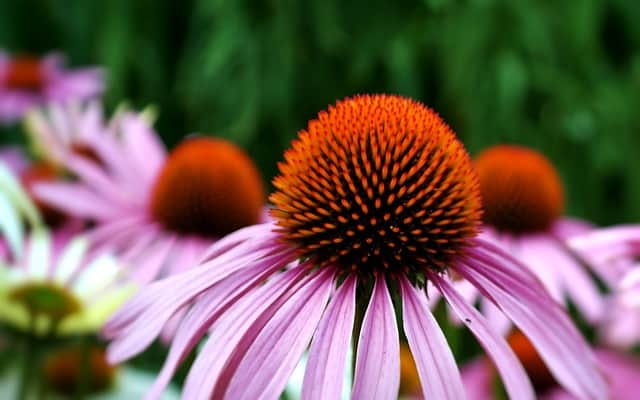
The Coneflower (Echinacea spp.) is an iconic perennial that has rightfully earned its place in any discussion about deer-resistant plants. Typically characterized by their vibrant pink to purple ray flowers and distinctive central cone-shaped seed heads, Coneflowers bloom from mid-summer through fall, providing stunning color and structure in your garden.
Deer tend to avoid Coneflowers due to their rough foliage and slightly bitter taste, making them an excellent choice for gardens threatened by foraging wildlife. Beyond their resilience against deer, Coneflowers are resilient in drought conditions, once established, thriving in poor to average soils, and requiring minimal maintenance. This resilience allows them to conserve water while attracting a vast array of pollinators, including bees and butterflies, making them invaluable in attracting wildlife.
Moreover, Coneflowers have earned their place in herbal medicine, particularly Echinacea purpurea, known for its immune-boosting properties. This dual role as a garden beauty and a health supplement reinforces the importance of including Coneflowers in your planting scheme, ensuring your garden remains a source of visual enjoyment and health benefits.
Lupine
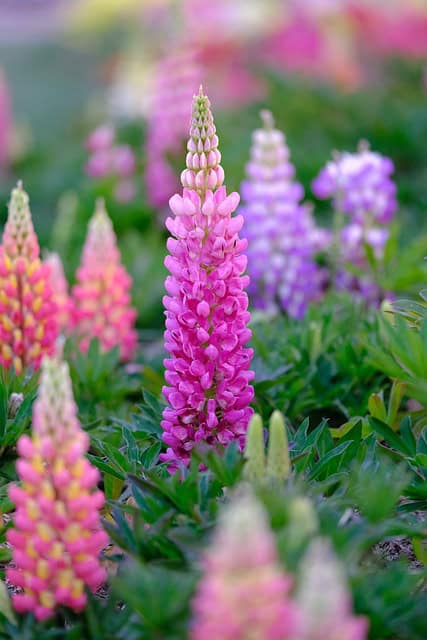
Lupine (Lupinus spp.) is a striking perennial revered for its tall, spike-like flower clusters that can present a riot of colors, including blue, purple, yellow, and white. While many gardeners may associate these vibrant blossoms with summer, certain varieties can bloom in late summer and continue into fall, providing stunning autumn displays.
One essential aspect that makes Lupine a desirable deer-resistant choice is its high alkaloid content, which renders it unappetizing to deer and other herbivores. This quality not only helps protect your garden from browsing but also supports the establishment of diverse plant communities. Lupines thrive best in well-drained soil with lots of organic matter; they also love full sun but can tolerate partial shade, making them versatile for various landscapes.
Additionally, Lupines play a significant role in nitrogen fixation, improving soil fertility for surrounding plants. Their deep taproots help aerate the soil while their foliage provides ground cover, preventing soil erosion. With all these beneficial qualities, Lupine serves not only as a visually striking addition to your fall landscape but also as a foundational species that aids the health and vitality of your garden ecosystem.
Viburnum
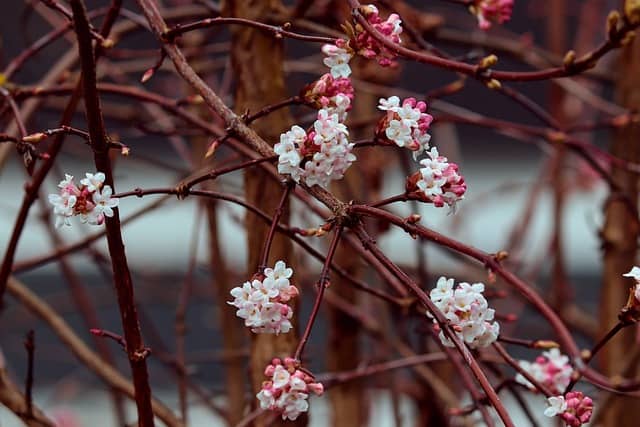
Viburnum species offer a versatile selection for gardeners looking to marry beauty with practicality. These deciduous and evergreen shrubs are renowned for their clusters of fragrant flowers, which typically bloom in spring, followed by attractive berries in late summer and fall. The wide range of Viburnum varieties, such as Viburnum prunifolium (Blackhaw Viburnum) and Viburnum dentatum (Arrowwood), allows gardeners to choose the right fit for their specific climate and garden conditions.
Deer tend to avoid Viburnum due to its thick foliage and tough texture, making it less appealing as a food source. Additionally, Viburnum is adaptable to various soil types, from moist to well-drained, and can thrive in full sun to partial shade, which enhances its usability in diverse landscaping settings. The berries not only provide food for birds and other wildlife but also create an eye-catching display that adds visual interest to your garden throughout the fall.
Beyond aesthetics, Viburnum is known for its ecological contributions. The flowers attract pollinators such as bees and butterflies, playing a vital role in supporting the local ecosystem. Incorporating Viburnum into your fall garden not only ensures a crucial food source for wildlife but also maintains vibrant year-round interest with minimal deer-related concerns.
Arctic Fire® Red Twig Dogwood
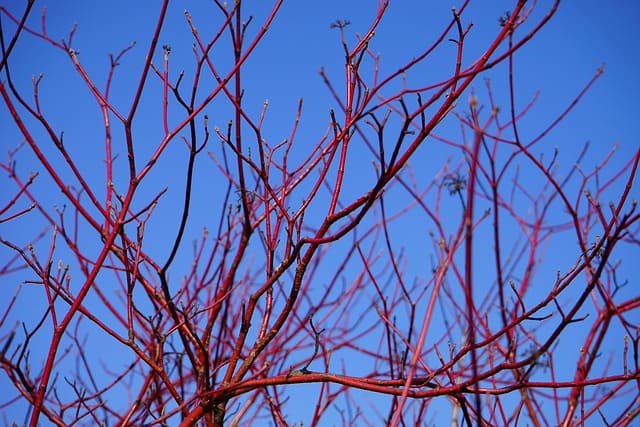
The Arctic Fire® Red Twig Dogwood (Cornus sericea ‘Arctic Fire’) is celebrated for its striking red stems, which provide a breathtaking burst of color, especially in the fall and winter months. This deciduous shrub not only adds visual drama to the garden but also acts as an effective deer deterrent, as its toughness and unpalatable foliage keep deer at bay.
With its compact size—typically reaching between 3 to 4 feet in height—this versatile shrub is ideal for smaller spaces or as part of a mixed border. The bright red branches emerge vividly against the bare winter landscape, offering much-needed color in the colder months. Additionally, Arctic Fire® produces white flowers in spring, followed by small white berries that attract birds.
Moreover, this dogwood variety is tolerant of wet soil conditions and thrives in full sun to partial shade, making it suitable for a range of garden environments, including rain gardens. Its ability to thrive in diverse settings eases landscape planning and ensures resilience throughout the seasons. When used in group plantings, Arctic Fire® creates a stunning visual statement, especially when paired with evergreens or contrasting plants that highlight the vibrant red stems.
Summersweet
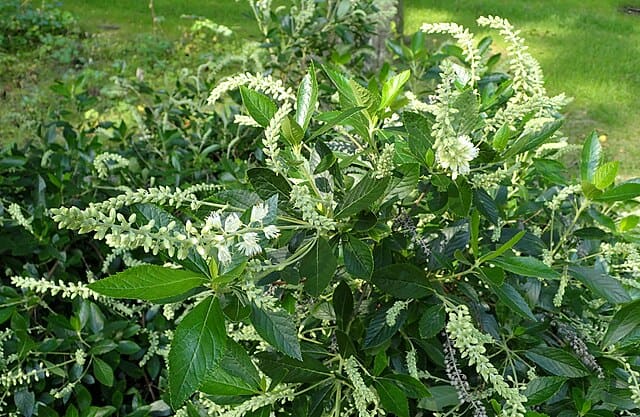
Summersweet (Clethra alnifolia) is a delightful shrub that blooms with fragrant white or pink spikes of flowers, filling the air with a sweet aroma that can draw in a multitude of pollinators. Typically flowering in mid-summer and lasting well into the fall, Summersweet attracts bees, butterflies, and hummingbirds, making it an excellent choice for wildlife gardens.
This adaptable plant is known for its resilience against deer; its aromatic leaves give off a scent that many herbivores find unappealing. Summersweet prefers moist, acidic soils, often thriving in partially shaded areas, which opens up possibilities for planting in woodland gardens or near water features. Its glossy green leaves turn a lovely yellow-brown in the fall, providing additional visual interest.
One of the distinctive features of Summersweet is its ability to adapt to different environments, including rain gardens and shady spots, making it especially useful for gardeners looking to fill challenging areas of their landscape. Moreover, the plant’s low-maintenance nature and ability to tolerate occasional flooding make it a great option for both novice and experienced gardeners.
Smokebush
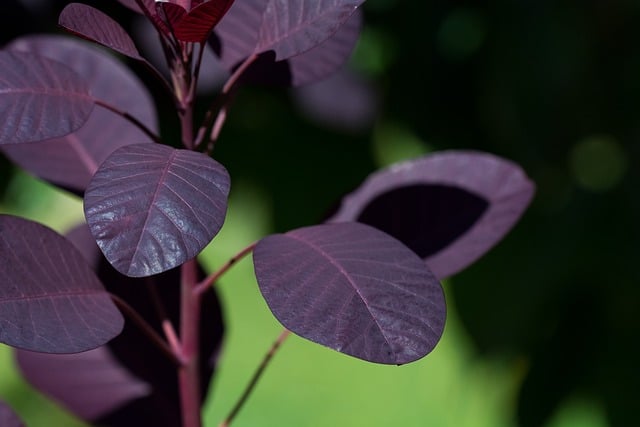
Smokebush (Cotinus coggygria), also known as Cotinus, is a stunning deciduous shrub that captivates with its dramatic summer and fall displays. Renowned for its airy, cloud-like panicles that resemble fluffy smoke, this plant adds a whimsical touch to any garden. The most popular varieties, such as ‘Royal Purple’ and ‘Gold Flame,’ showcase stunning foliage that transitions from greenish to striking reds and oranges in the fall, enhancing your landscape with vibrant seasonal color.
Deer typically avoid Smokebush due to its strong, aromatic leaves and tough texture, making it an excellent choice for those looking to keep their gardens intact. Furthermore, Smokebush is adaptable to varying soil types, preferring well-drained conditions but capable of tolerating drought once established. Its ability to thrive in full sun to partial shade allows for creative planting arrangements in various settings.
In addition to its ornamental appeal, Smokebush offers ecological advantages. The dense foliage provides shelter for small wildlife, while the plant’s flowers attract pollinators, adding to the biodiversity of your garden. Planting Smokebush not only creates an eye-catching focal point but also fosters a habitat that supports a variety of species, enriching the ecological web of your outdoor space.
Diervilla

Diervilla, commonly known as bush honeysuckle, is a low-maintenance, deer-resistant shrub that blooms beautifully in late spring and summer. Known for its clusters of bright, tubular yellow flowers, Diervilla adds a cheerful touch to your garden while enticing bees, butterflies, and hummingbirds. The foliage transitions to lovely shades of gold and dark red in the fall, ensuring that it continues to provide visual interest well into the cooler months.
This adaptable shrub is particularly valued for its tolerance to a range of soil conditions, including rocky and poor soils. Diervilla thrives in full sun to partial shade and is drought-tolerant once established, making it an ideal option for casual gardeners or those with challenging landscapes. Its compact growth habit ensures that it fits nicely into smaller spaces or works well as a groundcover.
One of the advantages of incorporating Diervilla into your fall planting scheme is its low susceptibility to pests and diseases, which further enhances its appeal for sustainable gardening. Additionally, the shrub helps with soil stabilization and can be utilized in erosion control efforts. By choosing Diervilla, gardeners can create a low-maintenance, vibrant landscape that remains protected from deer while contributing positively to environmental health.
Teton Firethorn
Teton Firethorn (Pyracantha ‘Teton’) is a stunning evergreen shrub that dazzles in the fall with its abundant clusters of bright orange to red berries. These vibrant fruits not only add a pop of color against the lush green foliage but also serve as a food source for birds throughout the winter months. The plant’s glossy leaves provide year-round interest, making it an exceptional choice for maintaining garden vibrancy.
Deer are generally deterred by the thorny branches of Teton Firethorn, which contributes to its status as a reliable deer-resistant plant. With its ability to thrive in various soil types and varying moisture levels, this shrub is incredibly versatile. Whether planted in gardens, hedgerows, or as a privacy screen, Teton Firethorn adapts well to full sun or partial shade, allowing for creative landscaping possibilities.
In addition to its aesthetic appeal, Teton Firethorn offers several ecological benefits. The plant plays a crucial role in attracting pollinators during its spring bloom and provides important wildlife habitat through its fruits. The dense foliage of Teton Firethorn can act as a natural barrier, enhancing security and privacy in your garden while contributing to local biodiversity.
‘Autumn Joy’ Stonecrop
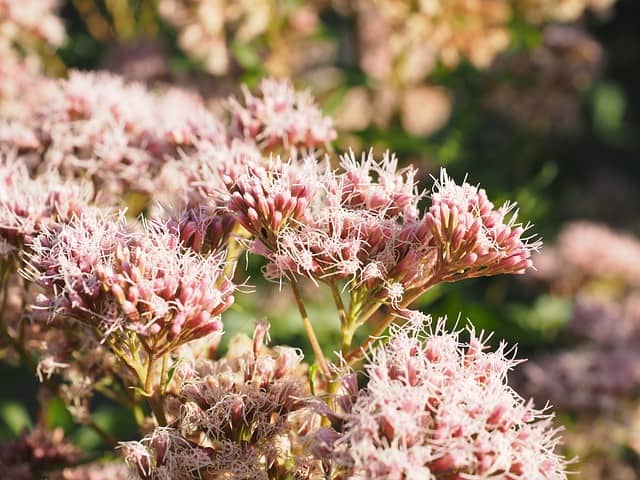
‘Autumn Joy’ Stonecrop (Sedum spectabile) is a versatile perennial that captivates with its remarkable ability to provide stunning color as summer transitions toward fall. The plant features clusters of thick, succulent leaves that are deep green during the summer, turning vibrant shades of reddish-orange as autumn unfolds. Its large, flat flower heads bloom into shades of pink, which deepen over time, offering a striking display against the cooler backdrop of fall.
This resilient succulent not only dazzles the eye but is also extremely deer-resistant, thanks to its fleshy leaves and robust structure, which deer find less appealing. Sedums thrive in well-drained soils and prefer full sun, making them perfect for sunny garden beds and rock gardens. Their low maintenance requirements and drought tolerance make them ideal for gardeners who desire beauty without excessive care.
In addition to their ornamental benefits, ‘Autumn Joy’ Stonecrop serves as an important food source for pollinators, including bees and butterflies, during the late summer and early fall months, as it flowers later in the season. With their ability to attract beneficial wildlife while rewarding gardeners with eye-catching colors, these hardy perennials strongly embody the essence of a deer-resistant fall landscape.
Coral Bells

Coral Bells (Heuchera spp.) are cherished for their stunning foliage and versatility in landscaping, making them a must-have in any garden design. Known for their wide range of leaf colors—from deep purple to vibrant lime green—Coral Bells provide a year-round visual appeal that remains striking as the seasons change. In the fall, their foliage deepens, showcasing rich hues that complement the autumn landscape.
One of the compelling traits of Coral Bells is their deer resistance; the textured leaves often deter browsing wildlife due to their slightly bitter taste. This low-growing perennial is perfect for edging pathways or creating lush groundcover, thriving in a variety of conditions, including partial shade and different soil types. While they prefer well-drained soils rich in organic material, they can adapt to moderate drought once established.
Coral Bells are also celebrated for their delicate floral spikes that rise above the foliage, presenting tiny, bell-shaped flowers that attract hummingbirds and other pollinators. This multi-dimensional appeal supports biodiversity while enhancing your garden’s beauty. By incorporating Coral Bells into your fall planting palette, you invite a remarkable blend of color, texture, and ecological value, ensuring your space remains vibrant and dynamic well into the colder months.
Boston Ivy
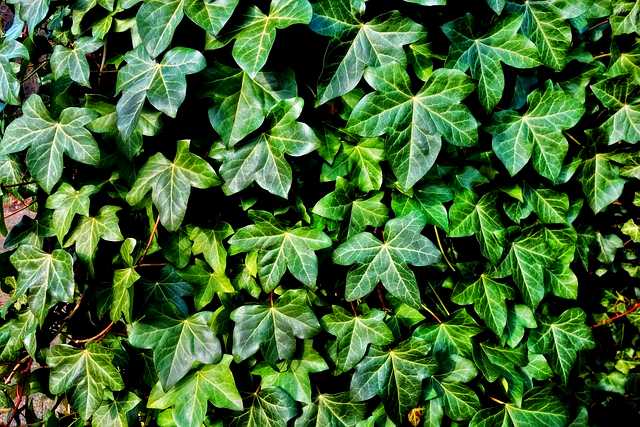
Boston Ivy (Parthenocissus tricuspidata) is an enchanting climbing vine that transforms any structure or wall into a lush canvas of color come fall. Known for its vibrant foliage, Boston Ivy exhibits brilliant shades of crimson, maroon, and orange as the growing season wanes, making it a spectacular sight against brick or siding. This vigorous vine can scale walls or fences quickly, providing sculptural interest, privacy, and density in your landscape design.
A notable feature of Boston Ivy is its remarkable resilience against deer. The plant’s tough, lobed leaves and twining habit help ward off browsing animals, making it a fantastic choice for those looking to enhance vertical space without worrying about deer damage. Additionally, Boston Ivy thrives in various soil conditions, from clay to loamy soils, and is adaptable to both full sun and partial shade.
The ecological benefits of Boston Ivy extend beyond aesthetics; its thick foliage provides vital habitat for birds and insects while promoting beneficial insect diversity. Furthermore, the vine’s ability to cover walls contributes to natural insulation, often reducing energy consumption in buildings. By choosing Boston Ivy, you enrich your garden with a vibrant deciduous addition that supports both structural beauty and local wildlife.
Autumn Fern
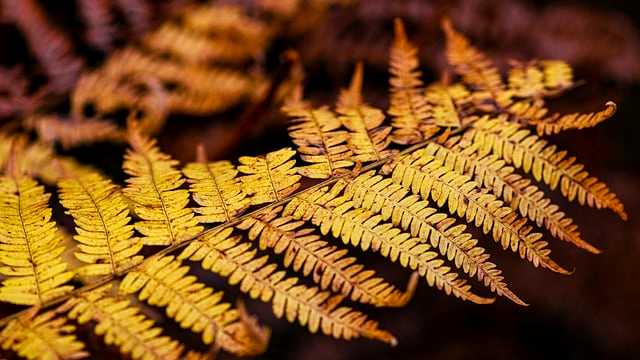
Autumn Fern (Dryopteris erythrosora) is a stunning perennial that brings rich texture and captivating colors to shaded areas of your garden. Known for its glossy fronds that unfurl in a vibrant coppery hue in spring, this fern matures to a dark green in summer and can display lovely golden shades in the fall. The interplay of colors throughout the seasons enhances the visual interest of your garden, particularly when combined with other autumn-hued plants.
Deer generally avoid Autumn Fern due to its tough leaf texture and unpalatable nature. This fern thrives in well-draining, moisture-retentive soils and flourishes in shady to partial sun conditions, making it particularly suitable for woodland gardens or shaded borders. Its ability to tolerate varying soil conditions adds to its allure, as it can adapt to both average garden soil and more acidic varieties.
Moreover, Autumn Fern plays an important role in the ecosystem. Its fronds provide cover for small wildlife, while its ability to thrive in woodland areas supports the ecological diversity of your garden. By incorporating Autumn Fern, you not only add a long-lived, hardy plant to your collection but also help create a sustainable environment that benefits both flora and fauna amid the beauty of fall.
Sweetspire
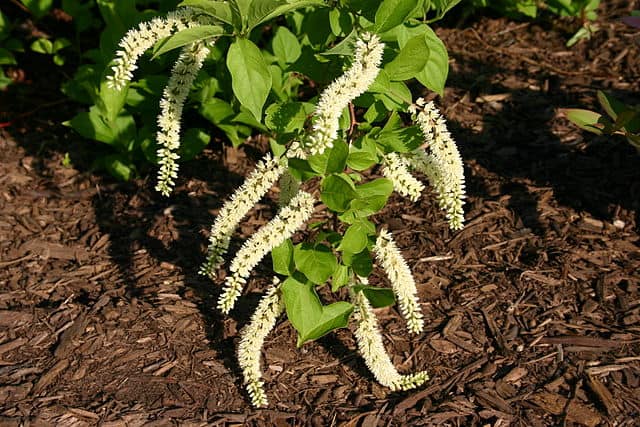
Sweetspire (Itea virginica) is a deciduous shrub that truly shines in the fall, delighting gardeners with its captivating foliage and fragrant flowers. The plant produces cascading racemes of creamy white flowers in late spring to early summer, which attract pollinators and add an enchanting aroma to your garden. As autumn approaches, the leaves transition from lush green to a dazzling array of reds, oranges, and yellows, transforming your landscape into a vibrant canvas.
One of the alluring qualities of Sweetspire is its natural deer resistance. The plant’s thick, rich foliage tends to be less appealing to deer, making it a reliable choice for those who experience deer browsing. Sweetspire thrives in moist, well-drained soils and is tolerant of both full sun and partial shade, making it versatile for various landscapes, including rain gardens or along pond edges.
In addition to its ornamental charms, Sweetspire provides significant ecological benefits. Its flowers attract essential pollinators like bees and butterflies, while its dense foliage serves as shelter for a variety of wildlife. By integrating Sweetspire into your fall plantings, you create a visually stunning display that not only enriches your garden with seasonal colors but also supports local ecosystems, making it a quintessential component for any deer-resistant landscape.
Allium – Allium spp.
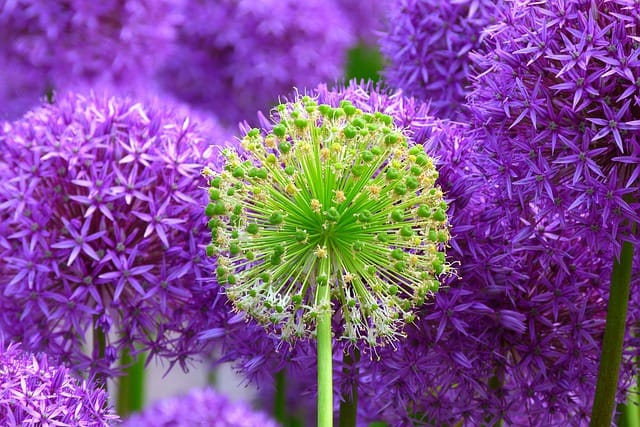
Allium, commonly known as ornamental onion, encompasses a range of species that stand out for their striking flower globes and unique structure. Varieties such as Allium giganteum, or giant allium, produce impressive, spherical flower heads that are perfect for adding architectural interest to your garden during late spring and early summer. By the time fall arrives, the spent flower stalks often take on a silvery hue, creating an intriguing textural element against the backdrop of autumn foliage.
Deer typically shun Allium plants, as their strong, onion-like fragrance is off-putting to these browsers. This natural deterrent makes Allium an excellent choice for gardeners seeking to maintain a lush, intact landscape. Allium thrives in well-drained soils and prefers full sun, positioning it perfectly as an eye-catching focal point in garden beds or borders.
Beyond their deer resistance, Alliums are also beneficial for attracting a host of pollinators, including bees and butterflies, during their blooming period. Their ability to adapt to various soil types adds to their appeal, as they flourish in typical garden soils and can tolerate drought conditions once established. By incorporating Allium into your autumn landscape, you not only enhance the visual appeal with their unique blooms and interesting silhouettes but also reinforce ecological diversity within your garden.
Daffodils – Narcissus spp.
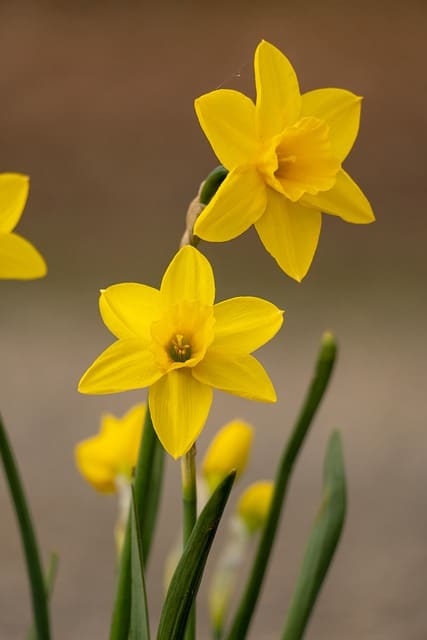
Daffodils (Narcissus spp.) are heralded as classic spring perennials, but their importance in deer-resistant landscaping extends into the fall as well. The bulbous roots of daffodils are often planted in the fall, and their stunning yellow, white, or orange blooms that emerge in early spring are a sure sign that warmer days are ahead. What makes daffodils truly remarkable is their inherent toxicity; all parts of the plant contain chemicals that are bitter and unpalatable to deer, effectively safeguarding these striking flowers from browsing.
Daffodils thrive in well-drained soils and prefer locations that receive full sun to partial shade. These hardy bulbs naturalize well, meaning they will return year after year, gradually multiplying and enhancing your garden’s vibrancy over time. Their adaptability makes them suitable for various settings, from naturalized areas to formal garden beds.
Beyond their deer resistance and ease of care, daffodils provide significant environmental benefits. They are an early food source for pollinators emerging from winter dormancy, such as bees. By incorporating Daffodils into your landscape, you ensure a burst of spring beauty while effectively deter deer and support wildlife, perfectly embodying a balance between aesthetics and sustainability.
Fritillaria – Fritillaria spp.

Fritillaria, known for its unique and exotic flower shapes, adds an air of sophistication and intrigue to any garden. These perennials, particularly Fritillaria imperialis (crown imperial), feature striking, bell-shaped flowers that rise above lush foliage, often in shades of orange, yellow, and purple. Their distinct appearance and stately growth habit make them stand out as a focal point in flower beds.
One of the significant advantages of Fritillaria is their deer resistance. Similar to Daffodils, these plants contain alkaloids and other compounds that render them unappealing to deer. Their bulbs, when planted in the fall, not only bring visual enchantment in spring but also serve as a protective strategy for garden enthusiasts frustrated by scavenging wildlife.
Fritillaria prefers well-drained soil and enjoying full sun or partial shade, making them versatile enough to fit into various garden designs. Their late spring blooms attract bees and other pollinators, contributing positively to the ecosystem. Incorporating Fritillaria into your fall garden plans ensures a captivating display that withstands the challenges posed by deer while enriching your landscape with diversity and ecological balance.
Glory-of-the-Snow – Chionodoxa spp.
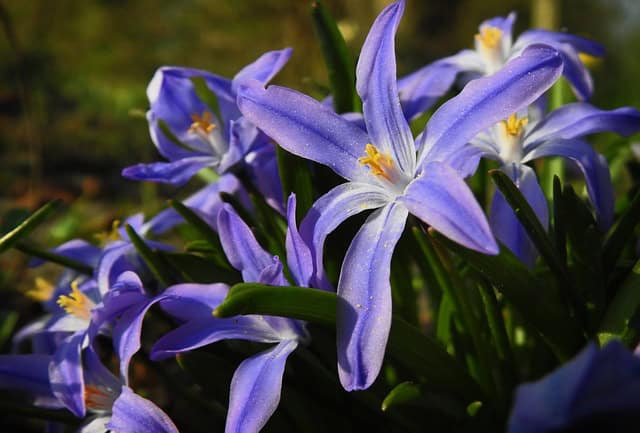
As one of the first flowers to bloom in spring, Glory-of-the-Snow (Chionodoxa spp.) is beloved for its charming, star-like flowers that blanket the ground in shades of blue, pink, or white. However, these early bloomers also deserve a spot in your autumn planning, as they can be planted in the fall to bring a refreshing burst of color to winter-weary landscapes. Their resilient nature and striking presence make them a perfect fit for rock gardens, borders, or naturalized areas.
Deer typically avoid Glory-of-the-Snow, which is an excellent advantage for gardeners contending with hungry wildlife. The bulbs are known to be toxic to deer, deterring them from treating these lovely flowers as a snack. This means that planting Glory-of-the-Snow bulbs in the fall promises a vibrant spring display that survives the ravages of foragers.
This hardy plant thrives in well-drained soils and benefits from full sun to partial shade. Their adaptability allows them to flourish in slight neglect, making them a perfect low-maintenance choice. Beyond their exquisite blooms, Glory-of-the-Snow also serves as an important early food source for emerging pollinators like bees. Choosing to include this delightful species in your landscape further enriches the biodiversity and resilience of your autumn garden.
Hyacinth – Hyacinthus orientalis

Hyacinths (Hyacinthus orientalis) are known for their spectacular, fragrant blooms that herald the arrival of spring. These bulbous perennials are often planted in the fall, making them an important addition to any autumn garden plan. Their tightly packed clusters of flowers can display an array of colors, including rich purples, sunny yellows, and soft pinks. This vibrant spectrum not only attracts attention from gardeners but also serves as a beacon for pollinators once spring arrives.
The reason that Hyacinths are considered deer-resistant lies in their strong fragrance and slightly toxic components. Deer tend to avoid plants with distinct smells or bitter-tasting foliage, making Hyacinths a less appealing option for these foragers. By incorporating these bulbs in your fall planting, you can look forward to their explosions of color in early spring without the worry of deer damage.
Hyacinths prefer well-drained soil and should be planted in areas that receive full sun or partial shade. Their adaptability and beauty make them an excellent choice for borders, containers, and cutting gardens. Beyond their visual and olfactory appeal, Hyacinths can also serve as an eco-friendly choice in your landscape, attracting beneficial pollinators that enhance the garden’s health.
Snowdrops – Galanthus nivalis
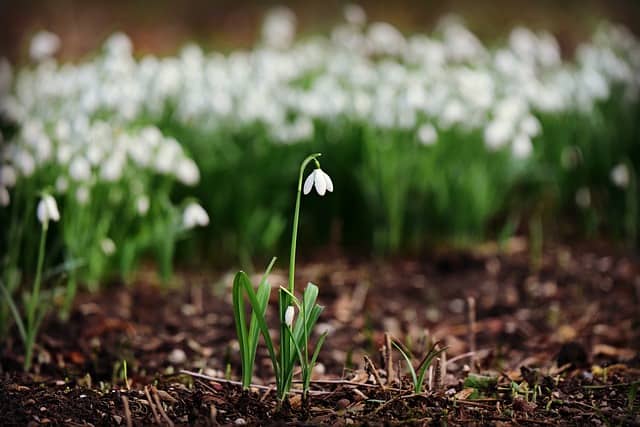
Snowdrops (Galanthus nivalis) are enchanting harbingers of spring that can be planted in the fall, allowing them to create delightful surprises in your garden as the snow begins to melt. These delicate, nodding white flowers emerge when winter is still lingering, often poking through the frost to brighten the landscape. Their resilience and ability to thrive in a variety of conditions make them a standout choice for any garden.
One of the many advantages of Snowdrops is their deer resistance; the bulb and foliage contain a bitter compound, making them unappealing to deer and other herbivores. This characteristic ensures that your winter-to-spring transition remains beautifully intact, even in areas known for deer activity.
Snowdrops prefer well-drained soil and can be planted in naturalized settings or beneath trees, where they can share space with early spring foliage. Although they thrive in partial shade, they also do well in full sun, demonstrating remarkable versatility. Planting Snowdrops not only adds charm and elegance to your fall garden preparation but also supports biodiversity, as they attract early pollinators emerging from winter dormancy.
Iris – Iris spp.
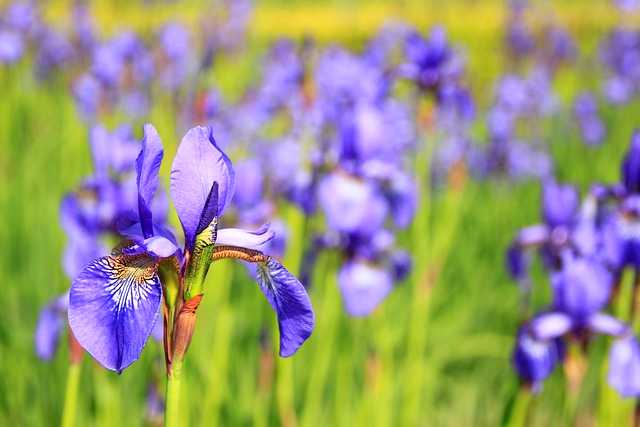
The Iris genus boasts a wide variety of species and cultivars that can transform any garden into a stunning display of color and texture. Known for their striking flowers, Irises come in many shades, including deep blues, vibrant yellows, and soft whites, making them a versatile choice for any garden aesthetic. As fall approaches, many gardeners choose to plant bearded or Siberian Iris varieties, setting the stage for a beautiful spring bloom.
Irises are also praised for their deer-resistant properties. Their tough, sword-like foliage tends to deter browsing, as deer often seek more palatable plants. By adding Irises to your fall planting scheme, you create a landscape that will flourish without the constant concern of wildlife interference.
These perennial beauties thrive in well-drained soils and full sun, making them perfect for garden beds or along borders. Irises are relatively low-maintenance and can withstand slightly moist or dry conditions, depending on the type. Their striking blooms not only provide visual pleasure but also attract butterflies and other pollinators, thereby promoting healthy garden ecosystems.
Crocus – Crocus spp.
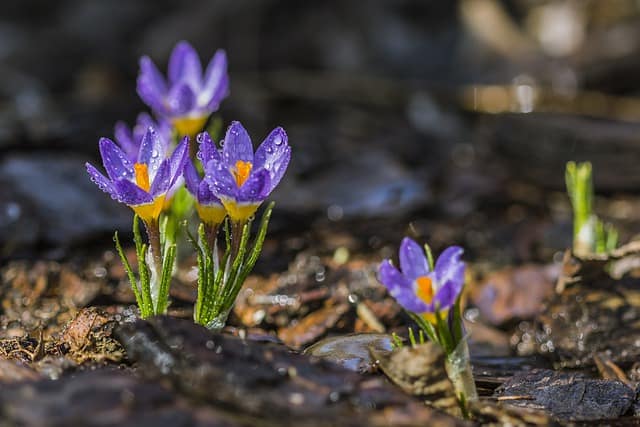
Crocus, a beloved harbinger of spring, consists of a diverse group of perennial plants known for their adorable, goblet-shaped flowers that arrive in vibrant hues, including purples, yellows, and whites. Planting Crocus bulbs in the fall ensures that these cheerful blooms can surprise you in early spring, often emerging before the last snows have melted. The sight of these delicate flowers pushing through the frost is nothing short of uplifting and signals the end of winter’s hold.
One of the remarkable attributes of Crocuses is their deer resistance. The plant’s corms are toxic if ingested and have a powdery texture that deer tend to avoid. Therefore, adding Crocuses to your garden can provide a reliable dose of brightness without the worry of deer nibbling on them.
These resilient plants thrive in a range of soil types, preferring well-drained locations in full sun to partial shade. Crocuses are perfect for naturalizing in lawns or rock gardens, where their vibrant hues can add cheer and charm. Their early bloom time makes them invaluable for supporting foraging pollinators, such as bees, emerging from winter’s slumber. By incorporating Crocus into your fall garden preparations, you ensure a delightful transition from the starkness of winter to the joyousness of spring.
Camassia – Camassia spp.
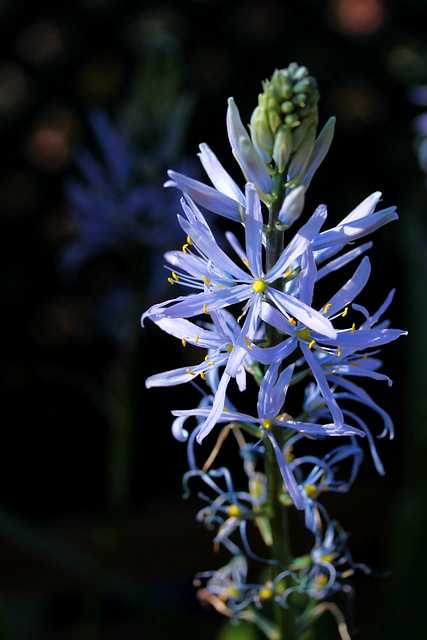
Camassia, commonly known as quamash or camas lily, is a native North American bulbous perennial that boasts stunning spikes of star-shaped flowers in various shades of blue or white. These robust plants often reach their fullest glory in late spring to early summer, making them a fantastic choice for extending the bloom period in your garden. The gentle sway of their tall stalks in the breeze adds a captivating presence to any landscape.
Deer tend to shy away from Camassia due to its bitter-tasting bulbs and foliage that may be off-putting to browsing animals. Thus, these plants are an excellent addition for gardeners looking to deter deer while enhancing their gardens’ visual appeal. When planted in the fall, Camassia bulbs establish themselves, leading to lush growth and striking flowers in the following spring.
Camassia prefers moist, well-drained soils and thrives in full sun to partial shade, making them a versatile option for various garden settings. They work wonderfully in mixed borders, meadows, or alongside water features, contributing to the overall biodiversity of your landscape. Furthermore, Camassia flowers attract pollinators, including bees and butterflies, enriching your garden’s ecosystem. By choosing Camassia as part of your fall planting strategy, you foster a space of beauty that blooms vibrantly while keeping deer at bay.
English Bluebells – Hyacinthoides non-scripta
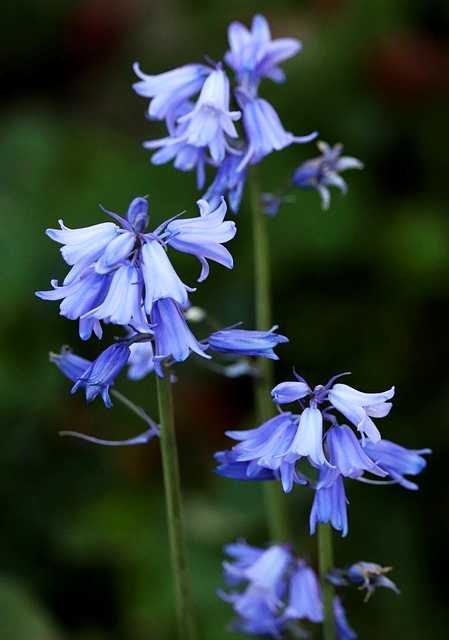
English Bluebells (Hyacinthoides non-scripta) are enchanting spring perennials known for their nodding, bell-shaped flowers that create beautiful carpets of blue in woodlands and meadows. Planting these bulbs in the fall allows for their striking blooms to emerge in early spring, transforming your garden into a sea of delicate color. The fragrance and soft hues of English Bluebells evoke a sense of tranquility and elegance, perfect for woodland gardens or shaded areas.
Deer generally avoid English Bluebells due to the toxic compounds present in their leaves and flowers, making them a safe choice for those dealing with foraging wildlife. These perennials spread easily, forming dense colonies that can be particularly effective in naturalized settings, adding an enchanting quality to the landscape with minimal maintenance.
English Bluebells thrive in moist, well-drained soils and prefer dappled sunlight or partial shade, allowing them to flourish beneath trees or among taller plants. As a bonus, their flowering period attracts bees and other beneficial pollinators, benefiting the overall health of your garden ecosystem. Opting for English Bluebells in your deer-resistant fall planting ensures a captivating display of spring beauty that remains safe from deer, contributing to a harmonious balance of nature.
Lily of the Valley – Convallaria majalis
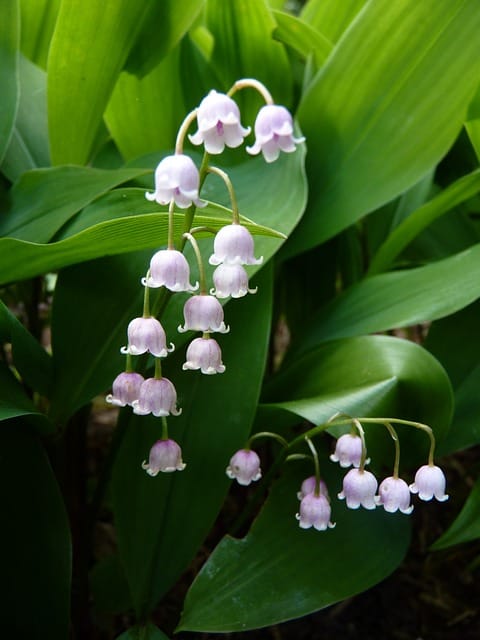
Lily of the Valley (Convallaria majalis) is a perennial plant celebrated for its fragrant, delicate white bell-shaped flowers that bloom in the spring. While these charming plants are often associated with traditional gardens, they also gain an appreciation for their wonderful deer-resistant qualities when planted in the fall. The sweet aroma of their blooms and lush green leaves bring a timeless elegance to any garden setting.
What makes Lily of the Valley particularly appealing is its highly toxic nature. All parts of the plant contain compounds that are harmful to many mammals, including deer. Consequently, this toxicity acts as a natural deterrent, ensuring that your garden remains untouched by browsing deer.
Lily of the Valley thrives in shady or partially shaded areas, making it a perfect choice for woodland gardens or spots beneath deciduous trees. This plant prefers rich, moist soil but is adaptable enough to succeed in a variety of conditions, including clay or loamy types. Once established, these resilient plants will spread, creating a lush carpet of foliage and subtle fragrance that enhances the beauty of your garden. Additionally, as a spring bloomer, Lily of the Valley plays a significant role in supporting early-season pollinators, making it an excellent choice for wildlife-friendly gardening.
Deer Resistant Fall Plants FAQ
1. What does “deer resistant” mean?
“Deer resistant” refers to plants that exhibit characteristics or compounds that deter deer from browsing. While no plant is entirely deer-proof, these species are less appealing due to factors such as toxicity, strong odors, or taste. By selecting these plants, gardeners can reduce the likelihood of damage from deer.
2. When should I plant deer-resistant fall plants?
Fall is an ideal time for planting many deer-resistant species, especially bulbs and perennials. Planting in the fall allows the roots to establish before winter, leading to vibrant blooms and foliage in the spring. Specific timing may vary by climate, so consult local planting guidelines for optimal results.
3. Can I mix deer-resistant plants with other garden varieties?
Absolutely! Many deer-resistant plants can be beautifully combined with other varieties to create stunning garden designs. When planning your garden, consider the blooming times, foliage texture, and color schemes to create a harmonious combination that not only resists deer but also supports overall biodiversity.
4. Do deer-resistant plants require special care?
While deer-resistant plants may withstand browsing better than others, it’s essential to provide them with proper care based on their individual needs. This includes suitable soil conditions, sunlight exposure, and watering requirements. Researching care specifics for each species will ensure robust growth and flourishing blooms.
5. Are there any other benefits to using deer-resistant plants in my garden?
Yes! Many deer-resistant plants are also beneficial for other wildlife, attracting pollinators like bees and butterflies. Additionally, these plants can promote healthier ecosystems by requiring less maintenance and fewer chemicals, contributing to a sustainable gardening approach.
6. How can I create a deer-resistant garden?
To create a deer-resistant garden, start by choosing a variety of plants known for their deer-repellent qualities, such as those highlighted in this post. Placement is also essential—grouping these plants together can help deter deer from wandering into your garden. Maintaining healthy soil and utilizing mulches can further enhance resilience and reduce stress on your plants.
Conclusion
By carefully selecting and incorporating plants that can withstand wildlife while delivering beauty and fragrance, you create a landscape that celebrates the changing seasons. Understanding specific plant traits and effective strategies for deterring deer enhances not only the aesthetics of your garden but also its ecological health and sustainability. With thoughtful planning and a diverse selection of resilient plants, your outdoor space can remain a stunning sanctuary amid the joys and challenges of nature.


